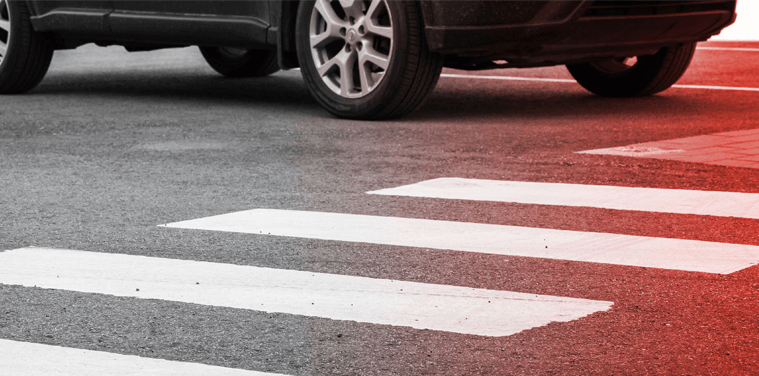Popular Blogs

Pedestrian accidents are on the rise in the US. According to the Governors Highway Safety Association (GHSA), a total of 6,590 people lost their lives due to pedestrian accidents, the highest in more than 30 years. In most cases, pedestrian accidents end up in the pedestrians incurring disparate damages compared to the motorists involved in the incident. While pedestrians suffer from life-altering injuries, motorists sustain minor damages due to the safety provided by the body of the automobile they drive. Due to this reason and the general perception that pedestrians always have the right of way, people presume that it is always the motorist responsible for causing an accident. However, that is not true from a legal standpoint. Pedestrians can be at-fault and can be held liable for an accident. This blog will discuss how fault is determined in a pedestrian-car accident and incidences where pedestrians can be held liable for causing accidents.
Before delving into the specifics of what aspects influence fault determination in case of pedestrian-car accidents, let’s take a closer look at the responsibilities and duties every road user is obligated to deliver.
Everyone who is on the road and uses it has certain legal obligations they need to fulfill. This legal obligation is known as the duty of care and is owed by all road users to other people on the road. Duty of care means that you owe the responsibility of acting reasonably when on the road. This means that you are obliged to ensure that your actions or failure to act do not cause injury to other road users or damage property. Anyone who fails to uphold the duty of care and causes an accident is liable for the damages brought about due to the incident.
No person can be expected to behave perfectly in every situation. However, people need to exercise reasonable care under all circumstances. A failure to behave reasonably can be considered negligence, and you can be held liable.
When it comes to motorists, they are expected to have the skills of an average motorist. This is termed the objective standard of care. On the other hand, pedestrians are obliged to exercise reasonable care for their safety. In other words, a pedestrian must take action and care proportionate to the danger that is to be avoided.
As described earlier, both pedestrians and motorists have a duty of care. However, sometimes the party who is in a breach of duty is clear. Some instances where motorists are in a clear breach of duty are:
Some instances where pedestrians can be held liable for negligence are:

At times, both the pedestrian and driver can be at fault for the accident. Under such circumstances, different states use different models for calculating and determining the fault of each party. Two basic models are used and adopted in different forms for determining fault across the US:
Only a few states subscribe to this model. Under this model, if the party bringing the claim is negligent even to a small extent, then the case is dismissed. This model of determining fault can result in harsh results for the party bringing the claim. Irrespective of whether the culprit was 99% at fault, the model can result in the plaintiff losing the compensation they deserve and bringing them to justice.
Under this model, liability is determined based on the extent to which each party was at fault. A percentage of negligence is allocated to the pedestrian and the motorist involved in the accident. There are two variations of the comparative negligence model that are adopted:
The best way to determine who was at fault and what percentage of fault can be attributed to you is by consulting a pedestrian accident attorney. They have an in-depth understanding of the law and have the experience required to evaluate and determine where a case is headed or how it can play out in a court or during a settlement. If you or your loved one has been in a pedestrian-car accident, the best way to go about the process is to hire a seasoned pedestrian accident lawyer.